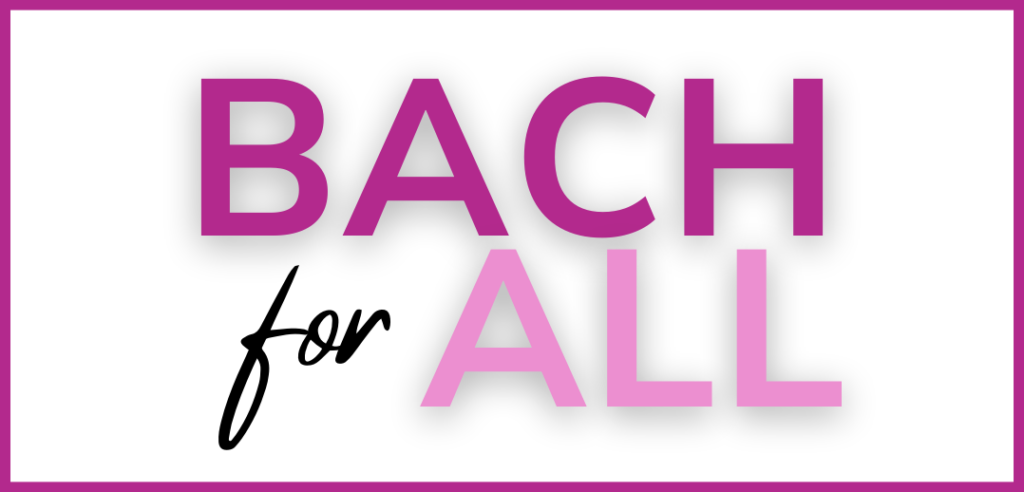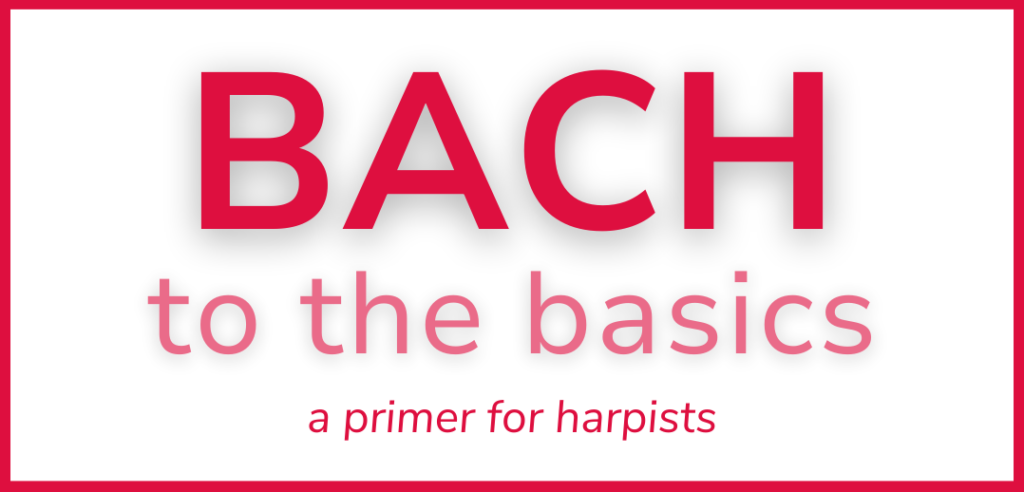Ah, spring. Time to throw open the windows, get some fresh air, give everything a good cleaning, and clear out the clutter that has accumulated over the winter.
Now that you’re in an organizing frame of mind, it’s also the perfect time to sort through your musical life to ensure a less stressful year. Tidying your physical and digital space and forming good habits can change the trajectory of 2014, so check out these suggestions for organizing your gigging, teaching, and practicing life.
Sparkling Studio
We all know it doesn’t take long for stacks of music to pile up and pencils to disappear from your studio. Ensuring that everything is tidy and ordered to suit your studio space can help you save time, have more focused practice sessions and lessons, and avoid any desperate scrambling before gigs. Here are a few steps you can take to spring clean your space and set yourself up for a great year.
Begin with the basics. Are all of your orchestra parts in binders or files? Do you have a compartmentalized bag for your strings? How about a bag for getting your gig music to where it needs to be? It’s impossible to organize your studio if the little things aren’t taken care of first.
Find everything in your home that you use in your studio and put it there. Valuable practice time is lost looking for that elusive eraser. Your six-year-old student is rapidly losing focus as you search for teaching supplies you didn’t realize you’d need. Anything and everything you use for your musical life should be in your studio to avoid wasted time.
Sort your string bag by octave and make sure it is easy to use. Check it for scissors, toggles, wire cutters, and an extra tuning key. While you are checking inventory, take the opportunity to go through your gig bag. Treat your gig bag like a survival kit. Include pencils, aspirin, a stand light, a sewing kit, tissues, nail clippers, clothes pins (for windy weddings), energy bars, business cards, and cloth band aids. Think of anything you kicked yourself for not having at a gig and make sure it’s in your bag now. You’ll be too stressed to remember it before your next job.
Put all those stray orchestra parts into binders so you can easily put your fingers on your markings for Daphnis and Chloe without tearing apart your studio. To save time, I put them in binders sorted by composer’s last name so I can find the correct part immediately. Don’t stop with your orchestra parts. Sort all your music by type: solo pieces, etudes, chamber music, gigging music, and teaching repertoire. Then into separate boxes, files, or drawers they go!
Find that stack of contracts and organize them by date in a file folder. Don’t allow those important documents to get lost. When you need them, you need them now, and the person who refused to pay you for their wedding music is probably not going to send you another one. This also allows you to double-check your calendar by thumbing through a stack of neatly ordered contracts. If you’re a working harpist who hasn’t started using contracts, ask a colleague if you can look at theirs as an example. Or look back at Harp Column’s article on contracts in the September/October 2010 issue, and get working on yours today. Even if you only have trustworthy clients your whole career, you will look more professional, and the client will know what is expected of them if you have the details on paper. It’s difficult for them to complain that you refused to play in the rain when your rain policy was spelled out in the contract they signed.
Now that you’ve gotten organized and realize exactly how much stuff you need filed away, find the furniture to fit the job. I personally use an Ikea Expedit as well as some filing cabinets and a bookshelf. Anything works as long as it has separate compartments with drawers, doors, and shelves for your different needs. I have separate compartments with doors for pieces I’m currently working on, office supplies I use regularly in my studio, recording supplies, and notebooks for lesson plans and ideas. I store my bean bag toys (to keep young elbows up) and my noisemakers (close those fingers!) in plain sight on a shelf. I believe that seeing them there helps students remember before I have to even use them. I recommend keeping theory, history, and composition books handy to reference during lessons or practicing. Siri can’t compete with you if you have everything at your fingertips.
Once the major pieces of your studio are in place, make sure everything you use daily is within arm’s reach of your bench. You wouldn’t believe how distracted you can get just leaving your seat for a writing utensil, and how much time it can potentially waste. You should be able to reach out and grab pencils, erasers, music you’re working on, your tuner and key, your metronome, and a notepad.
Speaking of notepads, always keep one by your harp. It seems like more than any other time of day, when I’m working at my instrument is when I think of important things I have to take care of. If I’m constantly jumping up to make that phone call or answer that e-mail, I’ll never get anything done. When you remember something or have an important idea, quickly jot it down and allot some time when you’ve finished your practice session to take care of it. Don’t try to use your smart phone for this because having a phone in your studio can be impossibly distracting. If you have to have your smart phone in your studio (for tuner or metronome apps) turn on the “do not disturb” feature so that none of your regular alerts go off while you are trying to focus.
Finally, make your studio space a place you want to be. Looking at intimidating piles of music you need to learn or unsightly balls of tangled wires from your electronics can make you feel overwhelmed and unsettled. Find a way to keep these things accessible but out of view. It’s easier to rationalize not practicing when you are stressed out simply by being in your practice space. I try to keep fresh flowers in my studio and always orient my harp toward a window to make my practice time feel like an escape instead of a chore.
Tidy Your Time Management
Freelancing harpists, busy harp moms, and overbooked teachers all know the importance of keeping an organized calendar. Today there are so many options for keeping your appointments straight. It’s not as important which one you pick, but rather that you choose one that works for you and you stick to it!
Pick a planner that works for you. I use a printed daily planner from Time Master instead of an online calendar. This is mainly because I’m terrified that all my gig notes could disappear with one computer glitch! I like this particular planner because it allows you to block out specific times, making it impossible to double book (if you remember to look at it before you schedule).
For those who are more trusting of technology, online calendars, such as Google Calender, can be powerful tools. Some have the ability to recognize dates written in e-mails and automatically add them to your planner (namely, Google and Outlook calendars). You can share them on your website so potential clients or students know when you are available, avoiding the unpleasantness of having to turn people down because of schedule constraints. You can access online calendars on your mobile device so you always have it with you, and you can use any computer to view it if you forget your device at home.
No matter what kind of calendar you use, however, it is imperative as a musician to keep one updated at all times. There is nothing more mortifying than missing a gig because you became overwhelmed and disorganized. By making it a habit to check your schedule daily and add events as soon as they are confirmed, those incidents can be avoided. It’s never too late to form a new habit! Keep your calendar with you while checking your e-mail and grab it when a potential client calls. Take it with you wherever you go and missed appointments will become a thing of the past.
Organize Your E-mail
With the technology available today, everyone expects speedy responses to all manner of inquiries. Many brides, personnel managers, and contractors will hire the first harpist to reply to an e-mail. Don’t allow your inbox to get so cluttered that you miss an opportunity.
Stay on top of your correspondence by taking time to respond when you read your e-mail. Most messages only take a few minutes to reply to, so set aside a time every day to respond to each e-mail you have received. When I read an e-mail that I cannot respond to immediately or that includes information I need to remember, I always make sure to mark it as unread (a feature now available from all e-mail providers). That way I see it and read it again soon. Some e-mail providers will even keep unread e-mails on the top of the list so you don’t have to search for them. If I am asked something I cannot answer or take care of for a few days, I promptly and politely respond to let the inquirer know when I will be able to respond. The date is marked into my calendar so I don’t forget to follow up.
All e-mail providers also have folders, labels, or something you can use to sort your important e-mails. You can have ones titled “tax receipts,” “weddings,” “flights,” “read again soon,” you name it (literally). Whatever you find yourself getting important e-mails about, create a folder or label to store them under so you don’t find yourself fruitlessly digging through your inbox for a critical correspondence.
Finally, to keep yourself from having an overwhelming experience opening your inbox, get rid of the junk! Unsubscribe from all unwanted e-mails. If you receive coupons, special offers on vacations, or other e-mails you want to eventually read but that you don’t necessarily need to be hounded by at 6 a.m. on a Monday, create a filter for your inbox. In Gmail, you can filter by keywords or senders and have those e-mails sent directly to a folder. In Outlook, filters are referred to as “rules” but have the same function. You can also set up archives for individual senders, so all those gardening and fitness newsletters are swept away to where you can read them when you have time. A quick Internet search will help you discover how to use these features for the e-mail service you prefer.
Spruce Up Your Harp
You read that maintenance manual when you first received your instrument, but many of the things you should be doing have probably slipped your mind. Well, this is a perfect time to take care of those little things.
Make your harp sparkle. Dust and oil build up on your harp over time. Use a soft-bristle brush to dust the mechanisms and use a soft, dry cotton cloth to wipe off your instrument. For particularly dirty areas, you can use a slightly damp cloth to clean the wood, then immediately dry it with a soft, dry cloth. If you have a glossy finish on your harp, you can also clean the wood with lemon oil and then wipe it down with a soft rag. It is important to always check with your harp’s manufacturer for specific cleaning instructions.
Check your strings for wear and buzzes, and change the strings that have seen better days. A sure sign of a failing string is small hairs splitting out of the middle of the string or significant wear at the point where the disk or lever touches the string. These strings should be replaced now, since they are not giving you the best sound. You can also test for false strings by tuning your harp. Any string that the tuner has trouble detecting the pitch of is likely false. You can tell this when your tuner’s needle is swinging around much more than usual and you can never seem to get that string in tune. False strings can also sometimes be detected by running your fingers down the string, checking for lumps or changes in thickness. Replace any false strings you find. Bass wires should be changed every year if you are a gigging professional, so think back to when they were last replaced. If you can’t remember the last time you changed them or whether you’ve ever changed them at all, now might be the time! Need a string-changing refresher course? Look back at Harp Column’s “Five Easy Fixes” article in the January/February 2014 issue for some great string changing tips.
Now is a great time to do some preventative care for your harp. Check your harp for moving scars. Do you seem to be getting lots of dings on one particular spot on your instrument? Padding your harp or your car more effectively could help. It could be as simple as throwing a few more pillows on the bed of your harpmobile. Work through the moving process in your head and think of when the scratched or dented parts of your harp could be unnecessarily impacted and how you could pad or change what you do. If you can’t think of anything that could help, ask about it on the harpcolumn.com forums or ask a harp friend to come over and walk through it with you. Other harpists are a great resource.
If you’re feeling particularly ambitious, check your slot felts and see if they look worn out. Also check for any squeaks in your pedals or levers. Again, Harp Column’s “Five Easy Fixes” article has some great instructions, and there are many videos on YouTube if you want to tackle a more complicated issue that you’ve been putting off. Be sure you have all the necessary supplies (slot felts, rubber pedal pads, masking tape, hot glue gun, razor, etc.) before you begin. This is also a good time to think back to your last regulation. Depending on their level of use, harps should be regulated every one to three years, so make sure to schedule an appointment if your instrument is past due.
Make cleaning your harp a year-round habit by creating reminders for yourself to do these things more regularly. Keep a dust cloth and harp brush in plain sight somewhere in your studio as a reminder to clean up. Put a note in your string bag as a reminder to remove and clean that peg and wipe off those disks when a string breaks, since it’s the easiest time to do it! Be sure to keep an old toothbrush, Q-Tips, or a soft cloth in your string bag or studio to clean your harp’s mechanism. Eliminating the hunt for cleaning supplies ensures the cleaning actually happens. •
















